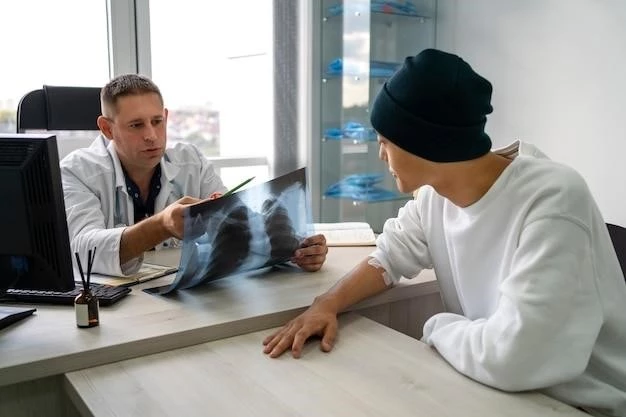Causes of Bronchiolitis Obliterans Organizing Pneumonia (BOOP)
Causes of Bronchiolitis Obliterans Organizing Pneumonia (BOOP)
Infections
Some cases of Bronchiolitis Obliterans Organizing Pneumonia (BOOP) can be triggered by viral or bacterial infections. These infections stimulate the body’s immune response, leading to the development of BOOP in susceptible individuals.
Autoimmune Diseases
Autoimmune diseases, where the immune system mistakenly attacks healthy tissues, can play a role in the development of Bronchiolitis Obliterans Organizing Pneumonia (BOOP). Conditions such as rheumatoid arthritis or lupus may increase the risk of BOOP.
Exposure to Toxic Fumes or Chemicals
Exposure to toxic fumes or chemicals in the environment or workplace can also contribute to the development of Bronchiolitis Obliterans Organizing Pneumonia (BOOP). Inhalation of harmful substances may lead to lung inflammation and the onset of BOOP.
Symptoms and Diagnosis of BOOP
Symptoms and Diagnosis of BOOP
Symptoms of BOOP
Common symptoms of Bronchiolitis Obliterans Organizing Pneumonia (BOOP) include persistent cough, shortness of breath, fever, fatigue, and chest discomfort. Patients may also experience flu-like symptoms and unintended weight loss.
Diagnostic Procedures for BOOP
Diagnostic procedures for Bronchiolitis Obliterans Organizing Pneumonia (BOOP) may include imaging tests like chest X-rays or CT scans, pulmonary function tests, bronchoscopy, and lung biopsy to confirm the presence of BOOP and rule out other lung conditions.
Treatment Options for BOOP
Treatment Options for BOOP
Medications
Medications for Bronchiolitis Obliterans Organizing Pneumonia (BOOP) may include corticosteroids to reduce inflammation, immunosuppressants to modulate the immune response, and antibiotics if an infection is present. These medications aim to manage symptoms and improve lung function.
Pulmonary Rehabilitation
Pulmonary rehabilitation programs for Bronchiolitis Obliterans Organizing Pneumonia (BOOP) patients focus on exercise, breathing techniques, and education to improve lung function, enhance endurance, and enhance overall quality of life. These programs are tailored to individual needs and help in managing symptoms.
Oxygen Therapy
Oxygen therapy is a crucial component of managing Bronchiolitis Obliterans Organizing Pneumonia (BOOP) for individuals with low blood oxygen levels; It helps alleviate shortness of breath, improve oxygen saturation, and enhance overall comfort and quality of life for patients.
Difference between BOOP and COPD
Difference between BOOP and COPD
Pathophysiology
The pathophysiology of Bronchiolitis Obliterans Organizing Pneumonia (BOOP) involves inflammatory cells filling the small airways and air sacs of the lungs, causing obstructive changes. In contrast, Chronic Obstructive Pulmonary Disease (COPD) primarily involves chronic inflammation and irreversible airflow limitation.
Symptoms
While both Bronchiolitis Obliterans Organizing Pneumonia (BOOP) and Chronic Obstructive Pulmonary Disease (COPD) may present with respiratory symptoms, BOOP typically features a more subacute course with symptoms like dry cough, fever, and general malaise, whereas COPD often presents with chronic cough, sputum production, and progressive dyspnea.
Treatment Approaches
Treatment approaches for Bronchiolitis Obliterans Organizing Pneumonia (BOOP) focus on anti-inflammatory medications like corticosteroids, whereas in Chronic Obstructive Pulmonary Disease (COPD), therapies aim at bronchodilation and symptom management. Both conditions require individualized treatment plans tailored to the patient’s specific needs and disease severity.
Prognosis and Long-term Outlook for BOOP
Prognosis and Long-term Outlook for BOOP
Disease Progression
The progression of Bronchiolitis Obliterans Organizing Pneumonia (BOOP) varies, with some cases resolving with treatment, but others experiencing recurrent or chronic courses. Regular monitoring and adherence to treatment help in managing the condition and improving long-term outcomes.
Complications
Complications of Bronchiolitis Obliterans Organizing Pneumonia (BOOP) may include respiratory failure, lung fibrosis, or progression to chronic respiratory conditions. Timely intervention, close monitoring, and adherence to treatment are crucial to prevent or manage these complications effectively and improve the overall prognosis.

Risk Factors for Developing BOOP
Risk Factors for Developing BOOP
Age
Advanced age is a significant risk factor for developing Bronchiolitis Obliterans Organizing Pneumonia (BOOP). Older individuals have a higher susceptibility to respiratory conditions and may experience more severe manifestations of BOOP due to age-related changes in lung function and immune response.
Smoking
Cigarette smoking is a major risk factor for developing Bronchiolitis Obliterans Organizing Pneumonia (BOOP). The harmful chemicals in tobacco smoke can damage the lung tissue, trigger inflammation, and compromise the immune system, increasing the likelihood of developing BOOP in smokers.
Occupational Exposures
Exposure to harmful substances in the workplace, such as chemicals, dust, or fumes, is a significant risk factor for developing Bronchiolitis Obliterans Organizing Pneumonia (BOOP). Occupational exposures can lead to lung inflammation and injury, increasing the likelihood of BOOP development in exposed individuals.
Research Advances in BOOP Management
Research Advances in BOOP Management
Novel Therapies
Recent advancements in research have led to the development of novel therapies for Bronchiolitis Obliterans Organizing Pneumonia (BOOP). These innovative treatments aim to target specific pathways involved in the disease progression, offering promising outcomes and improved management strategies for individuals with BOOP.
Clinical Trials
Ongoing clinical trials are exploring new treatment modalities and therapeutic approaches for Bronchiolitis Obliterans Organizing Pneumonia (BOOP). These studies aim to evaluate the safety and efficacy of potential interventions, contributing to the advancement of BOOP management and the development of more targeted therapies.
Lifestyle Recommendations for Individuals with BOOP
Lifestyle Recommendations for Individuals with BOOP
Smoking Cessation
Smoking cessation is paramount for individuals with Bronchiolitis Obliterans Organizing Pneumonia (BOOP). Quitting smoking can slow disease progression, reduce respiratory symptoms, and enhance overall lung health and quality of life in BOOP patients.
Regular Exercise
Incorporating regular exercise into daily routines is essential for individuals with Bronchiolitis Obliterans Organizing Pneumonia (BOOP). Physical activity can improve lung function, strengthen respiratory muscles, enhance overall cardiovascular health, and contribute to better management of symptoms associated with BOOP.
Healthy Diet Choices
Adopting healthy diet choices is crucial for individuals with Bronchiolitis Obliterans Organizing Pneumonia (BOOP). A diet rich in fruits, vegetables, whole grains, and lean proteins can support overall respiratory health, boost the immune system, and aid in maintaining optimal weight and nutritional status for better management of BOOP.
